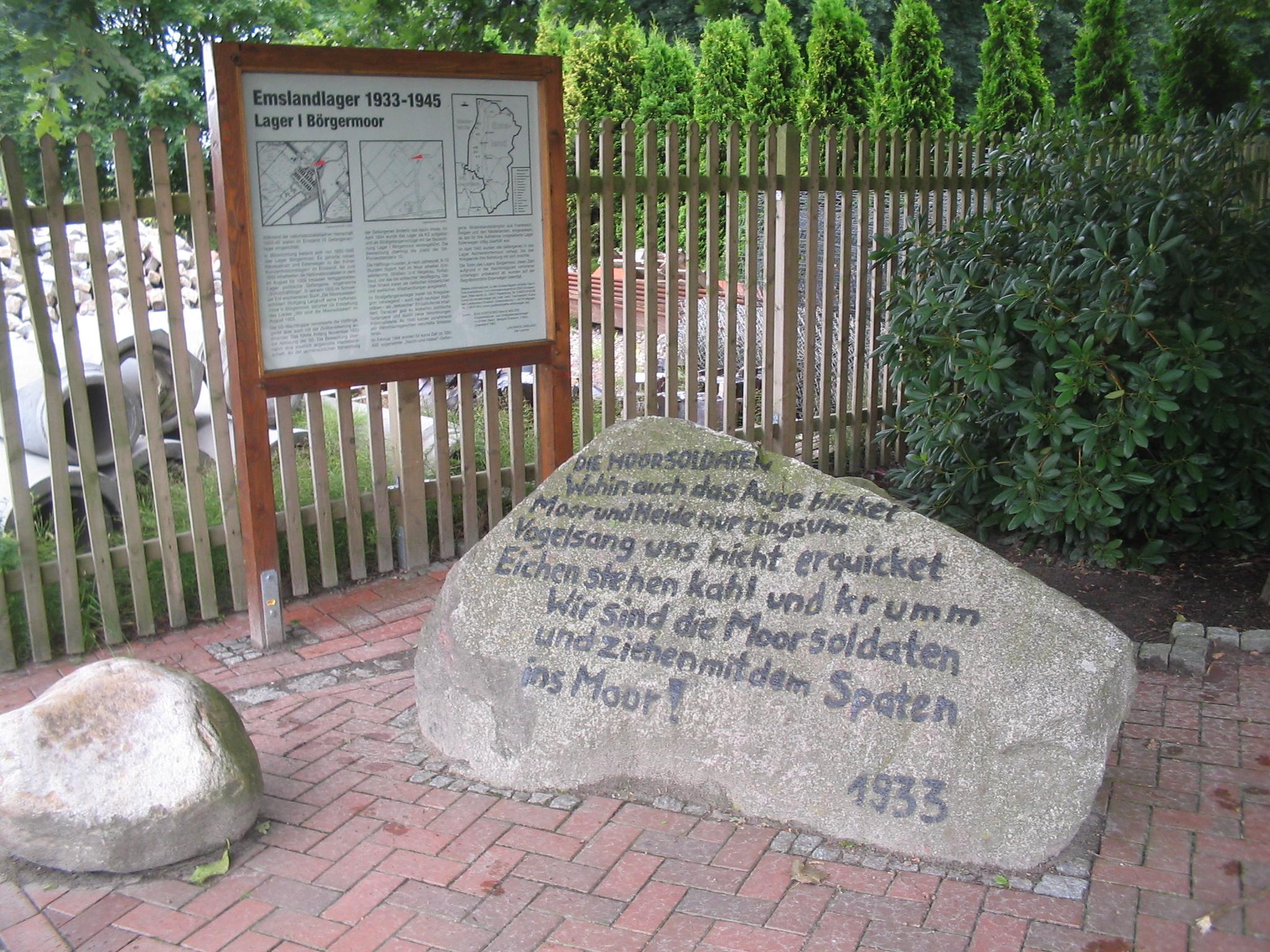|
Oberlangen
Oberlangen is a municipality in district (''Landkreis'') Emsland, Lower Saxony (''Niedersachsen''), north-western Germany. This was the location of the Prisoner-of-war camp A prisoner-of-war camp (often abbreviated as POW camp) is a site for the containment of enemy fighters captured by a belligerent power in time of war. There are significant differences among POW camps, internment camps, and military prisons. P ... Stalag VI-C. There is a cemetery with mass graves of Soviet prisoners, and individual graves of Polish and Italian prisoners. See also * Stalag VI-C References External links The Memorial of Esterwegen - The Emsland Campsin German Emsland {{Emsland-geo-stub ... [...More Info...] [...Related Items...] OR: [Wikipedia] [Google] [Baidu] |
Stalag VI-C
Stalag VI-C was a World War II German POW camp located 6 km west of the village Oberlangen in Emsland in north-western Germany. It was originally built with five others in the same marshland area as a prison camp (''Straflager'') for Germans. From 1939 till 1945 the Oberlangen camp was a Prisoner of War camp. Administratively, the camp was initially subordinate to Stalag VI-B Versen. However, with time it became the largest of a group of camps located at Alexisdorf, Dalum, Groß-Fullen, Groß-Hesepe, Neu-Versen, Wesuwe, Wietmarschen and Oberlangen, all collectively designated as Stalag VI-C/Z since 13 May 1942. The headquarters of the entire POW camp complex was located at Bathorn. Following the fall of the Warsaw Uprising of 1944, the Stalag VI-C Oberlangen became the only POW camp in Nazi-occupied Europe for female prisoners of war. An exhibition of this and the other 14 Emsland camps 1933-1945 was shown in the Documentation and Information Center (DIZ) Emslandlag ... [...More Info...] [...Related Items...] OR: [Wikipedia] [Google] [Baidu] |
Emsland
Landkreis Emsland () is a district in Lower Saxony, Germany named after the river Ems. It is bounded by (from the north and clockwise) the districts of Leer, Cloppenburg and Osnabrück, the state of North Rhine-Westphalia (district of Steinfurt), the district of Bentheim in Lower Saxony, and the Netherlands (provinces of Drenthe and Groningen). History For a long time the region of the Emsland was extremely sparsely populated, due to the fens on both sides of the river. Small villages were established in medieval times along the river and on the Hümmling. In the 13th century the bishops of Münster gained control over the region; the Emsland remained property of the bishop until 1803, when the clerical states were dissolved. It came under rule of Prussia and Arenberg, but after the Napoleonic Wars the Congress of Vienna decided to hand the territory over to the Kingdom of Hanover. The Duchy of Arenberg continued to exist as a fief of the Hanoverian kings. When Hanover was a ... [...More Info...] [...Related Items...] OR: [Wikipedia] [Google] [Baidu] |
Lower Saxony
Lower Saxony (german: Niedersachsen ; nds, Neddersassen; stq, Läichsaksen) is a German state (') in northwestern Germany. It is the second-largest state by land area, with , and fourth-largest in population (8 million in 2021) among the 16 ' federated as the Federal Republic of Germany. In rural areas, Northern Low Saxon and Saterland Frisian are still spoken, albeit in declining numbers. Lower Saxony borders on (from north and clockwise) the North Sea, the states of Schleswig-Holstein, Hamburg, , Brandenburg, Saxony-Anhalt, Thuringia, Hesse and North Rhine-Westphalia, and the Netherlands. Furthermore, the state of Bremen forms two enclaves within Lower Saxony, one being the city of Bremen, the other its seaport, Bremerhaven (which is a semi-enclave, as it has a coastline). Lower Saxony thus borders more neighbours than any other single '. The state's largest cities are state capital Hanover, Braunschweig (Brunswick), Lüneburg, Osnabrück, Oldenburg, Hildesheim, Salzgitt ... [...More Info...] [...Related Items...] OR: [Wikipedia] [Google] [Baidu] |
Prisoner-of-war Camp
A prisoner-of-war camp (often abbreviated as POW camp) is a site for the containment of enemy fighters captured by a belligerent power in time of war. There are significant differences among POW camps, internment camps, and military prisons. Purpose-built prisoner-of-war camps appeared at Norman Cross in England in 1797 during the French Revolutionary Wars and HM Prison Dartmoor, constructed during the Napoleonic Wars, and they have been in use in all the main conflicts of the last 200 years. The main camps are used for marines, sailors, soldiers, and more recently, airmen of an enemy power who have been captured by a belligerent power during or immediately after an armed conflict. Civilians, such as Merchant navy, merchant mariners and war correspondents, have also been imprisoned in some conflicts. With the adoption of the Geneva Convention on Prisoners of War (1929), Geneva Convention on the Prisoners of War in 1929, later superseded by the Third Geneva Convention, prisoner-o ... [...More Info...] [...Related Items...] OR: [Wikipedia] [Google] [Baidu] |


